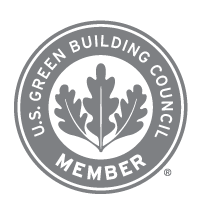Five Pavement Preservation Myths (busted)
Category: Blog Articles By: Chris Evers
Myths are common in most aspects of life. So much so they even spawned the long-running Discovery Channel show called MythBusters, dedicated to confirming or busting many of the most infamous of society’s myths. While asphalt pavement preservation never made it on air, that doesn’t mean there aren’t some common myths represented as fact throughout the public works profession.
The taxpayers who ultimately pay for good and bad roads alike trust us to be good stewards of their hard- earned dollars. What we know to be true is that while good roads cost money, bad roads cost more. Therefore, keeping our roads in good condition rather than waiting until failure is critical to providing the public a safe and efficient transportation system.
To further dispel common pavement preservation myths is a public service I’m happy to perform! As Executive Coordinator of the Florida Pavement Preservation Council, it is my duty to help educate public works professionals around the United States. So here goes.
Myth One
Only agencies with good pavements should be using pavement preservation treatments.
This is one of the longest running myths out there. It’s actually true when the sentence is rearranged like this: “Only agencies that use pavement preservation will have good pavements.” Unless you happen to be blessed with unlimited funds, the sure-fire path to a good road network is utilizing pavement preservation. Just like any other asset we value and thus preserve, roads need preventive care to ensure small signs of wear and distress are caught before they become more serious.
For example, in preventive medicine the saying goes, “An ounce of prevention is worth a pound of cure.” No wonder today’s healthcare system focuses as much on preserving wellness as it does on treating disease. So should we!
Waiting for small distresses to beget large failures by turning a blind eye rather than proactively addressing these issues is the very definition of dereliction of duty. If we task our public works staff with the job of maintaining our infrastructure, we must enable them to do their jobs by providing the necessary resources and support while holding them accountable for the results.
So, unless your agency has a blank check and no one to answer to – it’s past time to ditch this myth and accept responsibility for keeping our roadways healthy.
Myth Two
We can’t afford to do pavement preservation right now.
When money gets tight, as it often does, this popular myth will crop up. The truth is, you actually can’t afford not to! That’s because utilizing “the right treatment on the right road at the right time” is the only economical way to navigate challenging budgetary constraints.
It’s often said that for every dollar spent at the top of the deterioration curve we save between six and ten dollars over the life of a roadway. Actual savings can be even more pronounced than that!
Using top-of-the-curve treatments helps stretch precious dollars in tight times. It’s the agencies who understand the value of well-timed preservation whose road networks outperform those of the “worst-firsters.”
Imagine the folly of buying a new fleet of vehicles only to immediately cut all preventive maintenance such as oil changes and tire rotations out of the annual budget. Allowing the entire fleet to deteriorate to failure in order to purchase all new equipment would result in the swift termination of any decision makers and elected officials who decided to put this ill-conceived myth into policy.
Myth Three
Our agency’s policy is “fix the worst roads first.” Always was, always will be.
Why is it so many agencies have adopted this dictum?
“Worst-firsters” believe, despite ample evidence to the contrary, that it actually makes sense to fix their worst roads first. They are wrong.
Adopting this philosophy is the road to ruin, and is one of the most insidious myths in all of public works. Nowhere is more failure wrought effortlessly than actively deferring all preventive maintenance until the condition of the pavement is so bad there is literally no other option than to reconstruct the entire road.
For our industry, taking this approach is akin to being called a “flat earth’er.”
The internet is packed with great data that promotes optimized road preservation strategies. Every one of them incorporates preservation as part of the equation.
That doesn’t imply that traditional paving should be eliminated in favor of preservation. Many successful agencies allocate 50 to 70 percent of their budget to reconstruction and resurfacing, while routinely yielding two to three times the number of lane miles treated for preservation purposes, thereby reversing decades-long PCI (Pavement Condition Index) reductions.
Myth Four
New roads don’t benefit from pavement preservation.
A road as new as one year old couldn’t possibly need any preservation, right? That myth is also about to be busted!
The truth is that assuming any road is only one year old is itself a myth. That’s because almost all asphalt mix sold today contains 25 percent RAP (Reclaimed Asphalt Pavement) or even more. This recycled asphalt is comprised of binder that is decades old and extremely oxidized. It’s lost most of its elastic properties before it even arrives at the job site.
Studies have shown that the day new asphalt road is paved, its effective age is already two years old. This is why strategies at the top of the curve work so well. Using a maltene-based rejuvenator will extend the life of asphalt pavement by as much as five years for each treatment.
Elsewhere on this website, you can find documents and videos that verify the value of asphalt rejuvenation. For five decades, PTI has captured stunning examples of treated vs. untreated road segments, demonstrating that one treatment can result in as much as a 20- point difference in PCIs! Such examples and numerous industry and academic studies bolster the wisdom of applying Maltene Replacement Technology (MRT) to roads that are from one to three years old.
Myth Five
Pavement preservation is a relatively new and untested roadway network strategy.
This myth helps explain why some public works professionals are hesitant to incorporate pavement preservation strategies into their programs. However, a deeper dive into the history of these treatments reveal how badly busted this myth is!
Here are the actual invention dates of a handful of proven preservation treatments:
| Chip Seal | 1800s |
| Slurry Seal | 1930s |
| Cape Seal | 1957 |
| MRT Asphalt Rejuvenation | 1960 |
| Microsurfacing | 1970 |
As you can see, every one of these major preservation treatments has been around nearly half a century or much longer. Any reluctance to include them in your arsenal of pavement preservation techniques is based not on experience or scientific data but on myth.
Conclusion
Myths such as those summarized in this article are damaging to the public works profession and in many cases have institutionalized poor decision making that is deleterious to our nation’s infrastructure. It is past time to shatter these and other pavement preservation myths.
History is firmly on the side of pavement preservation. If we refuse to adapt to today’s realities by embracing sound engineering principles in favor of myth-based habits, we will be doing a grave injustice to our communities’ most valuable fixed asset.







